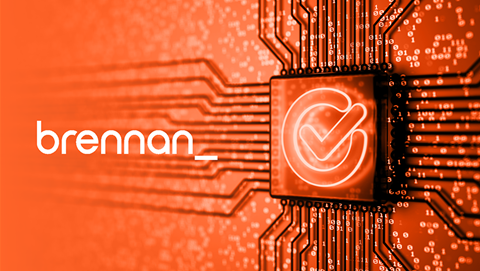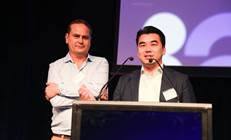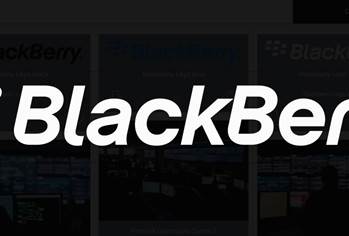Enterprise resilience is being redefined — and it’s happening at the edge. That was the message from Tanium’s vice president of global executive engagement, Erik Gaston, who took the stage at the company’s inaugural Tanium Connections event in Sydney to warn that traditional IT models are buckling under a “flood of complexity.”
.jpg&h=420&w=748&c=0&s=0)
“Our businesses don’t grow at the core; they grow at the edge, and with that comes complexity,” Gaston told delegates. As organisations expand through cloud, AI, and distributed work, he said, the real test of resilience now lies beyond the centre — where autonomy, automation, and visibility determine who can stay ahead.
“Resilience is no longer about recovering from disruption; it’s about predicting and preventing it,” Gaston said. “You need better ways to deal with all the telemetry and all the data being produced — that’s where automation and autonomy come in: to give you better insights, better oversight, and better control.”
From Reactive Defence to Proactive Resilience
The rise of AI is only amplifying the challenge. “CIOs tell me the same two things: I can’t find the edges of the table anymore, and I can’t keep up with the speed of AI and innovation,” Gaston said. “If that’s not true for you yet, it will be.”
ADAPT’s head of analytics and insights, Gabby Fredkin, echoed those concerns, describing a “modernisation tug of war.” While businesses invest heavily in transformation, legacy systems and outdated models continue to pull them back.
“Business growth has overtaken modernisation as the number one priority, but CISOs are constantly balancing risk with innovation,” Fredkin said. “The question is whether cybersecurity is being funded at the same pace as business growth.”
Gaston argued that organisations must stop trying to solve complexity by adding more of it.
“Teams and tools layered on top of each other don’t always talk. That doesn’t work,” he said. “There’s no silver bullet. You need strategy, the right platforms, and solutions that integrate, automate, and deliver insights in real time.”
Fredkin pointed to ADAPT research showing that half of Australian organisations still lag on basics like backups, multi-factor authentication, and application whitelisting — gaps already costing millions.
“If you’re secure, you’re compliant, but compliance doesn’t necessarily mean security,” he said. “Too many organisations treat frameworks like the Essential Eight as a box-ticking exercise, rather than the foundation of resilience.”
Both Gaston and Fredkin emphasised that speed, visibility, and certainty now define resilience, not just uptime.
“Slow is the new down,” Gaston warned. “In the past, downtime defined disruption. Now, slow response times and poor throughput are enough to damage business outcomes. Speed and certainty are the real measures of resilience.”
Fredkin agreed the same logic applies to AI. While generative AI investment has surged, three-quarters of CISOs say their organisations aren’t ready to adopt it safely. “CISOs now face a dual role: enabling innovation while ensuring safe adoption,” he said.
Gaston called confidence the new currency of resilience. “Without certainty, you lose credibility,” he said. “Speed and real-time data matter because what you present to your board, partners, or customers only carries weight if they can trust it.”
According to Gaston, enterprises must anchor their strategies on three pillars: automation, integration, and real-time insight. He positioned Tanium’s Autonomous Endpoint Management as an approach that delivers this certainty, powered through partnerships with ServiceNow and Microsoft.
“We’re moving into an agentic world where platforms and workflows must communicate seamlessly,” Gaston said. “Our goal is simple: to help you avoid disruption, improve efficiency, and build confidence through certainty.”
Trust and Autonomy in the Age of AI
Autonomous AI may be the next great efficiency play for enterprises, but without governance, it could also be their biggest risk.
That was the warning from Saqib Khan, Tanium’s field CIO, and Quentin Jones, ServiceNow’s ANZ director of sales for technology, risk, and security workflows. Both said agentic AI is reshaping CIO and CISO agendas.
“Agentic AI is effectively a new digital transformation for the CIO, and a cyber-resilience transformation for the CISO,” Khan told delegates. “It means moving from reactive measures to proactive outcomes — scaling efficiency, improving agility, and embedding cyber hygiene into every workflow.”
For CIOs, the focus is operational value. AI can autonomously detect unpatched machines, prioritise fixes based on business risk, and enforce patching at scale. For CISOs, the same tools deliver assurance and trust.
“AI can validate backup integrity, detect privilege creep, and give you evidence-based reporting to the board,” Khan said.
But both stressed that trust is essential. “Right now we’re in a deficit of trust in AI,” Khan said. “Thirty per cent of initiatives stall or fail. You can’t make autonomous decisions on data that’s a week old; you need runtime data at scale, in the moments that matter.”
Jones built on the point by testing the audience’s maturity. He asked everyone to stand, then stay standing if they were still reactive. Few remained upright as he added the stages — proactive, predictive, and finally autonomous.
“That’s the holy grail,” he said, “identifying problems before they happen and freeing teams to focus on innovation.”
Together, Khan and Jones said Tanium and ServiceNow can close the loop — pulling in real-time telemetry, prioritising fixes, and automating responses at enterprise scale. Organisations that combine CIO-driven innovation with CISO-driven governance will be the ones to build the “AI-first, self-defending enterprise.”
Breaking Down Silos in Cybersecurity
For Darren Argyle, former CISO at Qantas and Standard Chartered Bank, resilience begins with breaking down barriers between IT and security.
“Cybersecurity responsibility doesn’t sit only in security teams; it overlaps with IT, outsourcing, and operations,” Argyle said. “Even at a bank where I had 250 in cyber, the challenge was getting IT and security to talk. You need a common platform — a shared workbench — to build understanding.”
Argyle said unmanaged devices remain one of the biggest gaps in enterprise resilience, contributing to around 60% of cyber incidents in Australia. He also pointed to third-party risk and “shadow AI” as emerging challenges, with some organisations blocking hundreds of AI tools to keep pace.
“The more simplified your stack, the more secure you’ll be,” he said. “Complexity is the enemy of security.” Regulators, he added, are starting to push for simplification because “without it, you can’t get the visibility and confidence you need at board level.”
He urged organisations to focus on automated controls and crisis simulations using real data. “Simulations are where you uncover the gaps,” he said. “Nothing ever goes exactly to plan, and that’s the point.”
They’re also a culture exercise, not just a control test. “You learn more from what goes wrong than what goes right,” he said. “And unless your board and senior leaders take part, you won’t get the top-down reinforcement needed to change behaviour or unlock budget.”
Leaders Call for Real-Time Truth
At the same time, technology leaders from healthcare and web hosting warned that stale data and blind spots are the new enemies of resilience.
A senior IT manager from a large healthcare organisation said traditional reports had created a “false sense of security.”
Real-time visibility from Tanium exposed misconfigurations, unmanaged assets, and outdated software previously hidden from global dashboards — forcing a rethink of compliance and cutting patching cycles from weeks to days.
From the front lines of web hosting, a security analyst at a large web hosting provider described the scale of the threat environment. Hosting a large number of websites makes the platform a target for malware campaigns, and real-time telemetry has been critical in shutting them down.
The analyst recalled containing a worm that had spread across millions of files. “Within an hour we could isolate patient zero and contain the blast radius,” he said. “Tanium lets our engineers sleep while security stabilises the platform.”
Their message was consistent with the event’s central theme: confidence and resilience depend on speed.
“In a world where slow is the new down,” Gaston said, “enterprises can no longer rely on uptime and compliance alone; they need speed, certainty, and trust at scale.”


_(20).jpg&h=140&w=231&c=1&s=0)








 iTnews Executive Retreat - Security Leaders Edition
iTnews Executive Retreat - Security Leaders Edition






_(20).jpg&h=271&w=480&c=1&s=1)
.jpg&h=271&w=480&c=1&s=1)




_(1).jpg&h=140&w=231&c=1&s=0)



